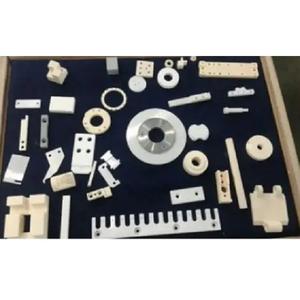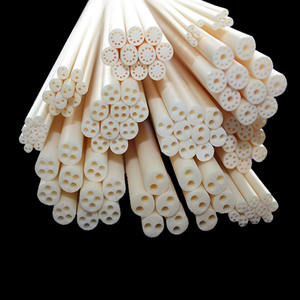Discover Premium Ceramic Products | Durability & Elegance United | Advanced Ceramics
1. Introduction
In the past 48 hours, a major breakthrough in high-temperature material science made headlines: researchers at a leading European ceramics institute announced a new manufacturing technique that enhances the thermal shock resistance of silicon carbide crucibles by over 30%. This innovation is set to revolutionize metal casting and semiconductor production, where thermal stability is non-negotiable.

Silicon carbide crucibles have long been prized for their exceptional durability, thermal conductivity, and resistance to chemical corrosion. But their applications extend far beyond the lab or foundry—today, silicon carbide is also making waves in kitchenware, industrial components, and even plumbing. Let’s dive into what makes this material so versatile and indispensable.
2. What Is a Silicon Carbide Crucible?
A silicon carbide crucible is a container made from silicon carbide (SiC), a compound of silicon and carbon known for its extreme hardness and thermal stability. These crucibles are engineered to withstand temperatures exceeding 1,600°C (2,912°F), making them ideal for melting metals like aluminum, copper, and precious alloys without degrading or contaminating the melt.
Unlike traditional clay-graphite crucibles, silicon carbide crucibles offer superior resistance to oxidation and thermal shock. This means they last longer, perform more consistently, and reduce downtime in industrial operations.
3. Key Properties and Advantages
Silicon carbide stands out due to several key characteristics:
- Exceptional thermal conductivity: Heats evenly and quickly.
- High mechanical strength: Resists cracking under stress.
- Chemical inertness: Doesn’t react with most molten metals or slags.
- Low thermal expansion: Minimizes risk of cracking during rapid heating or cooling.
These traits make silicon carbide crucibles the go-to choice in foundries, laboratories, and even aerospace manufacturing.

4. Beyond Crucibles: The Expanding World of Silicon Carbide Ceramics
While the silicon carbide crucible remains a cornerstone application, the material’s utility spans a surprisingly wide range of products.
In industrial settings, you’ll find rbsic silicon carbide tile blocks lining furnaces, silicon carbide ceramic columns supporting high-temp structures, and silicon carbide burner nozzles delivering precise flame control. Silicon carbide bricks and tubes—including silicon carbide thermocouple protection tubes and porous ceramic tubes—are standard in kilns and reactors.
Even plumbing benefits: silicon carbide ceramic pipes and disc taps (including quarter-turn variants) offer unmatched wear resistance and longevity in harsh environments.
5. Silicon Carbide in the Kitchen?
Yes—silicon carbide has entered the culinary world. High-end manufacturers now produce silicon carbide ceramic baking dishes, casserole dishes with lids, pie dishes, and even children’s plates. These items—marketed as silicon carbide ceramic dinnerware—combine aesthetic appeal with oven-to-table functionality.
Popular items include:
- Silicon carbide ceramic butter dish with lid
- Silicon carbide ceramic serving bowls and platters
- Silicon carbide black ceramic plates and white ceramic plates
- Silicon carbide ceramic pasta bowls and salad bowls
- Silicon carbide baking ceramic dish (sometimes compared to Staub cookware)

Thanks to its non-porous surface and thermal resilience, this dinnerware is safe for ovens, microwaves, and dishwashers—ideal for both everyday use and holiday gatherings like Christmas ceramic platters.
6. How Does Silicon Carbide Compare to Other Advanced Ceramics?
When evaluating materials for extreme environments, engineers often weigh silicon carbide against alternatives like boron carbide and silicon nitride.
Boron carbide vs silicon carbide: Boron carbide is harder and better for ballistic armor, but it’s more brittle and expensive. Silicon carbide offers a better balance of strength, thermal performance, and cost for most industrial uses.
Silicon nitride, on the other hand, excels in fracture toughness and is preferred for dynamic load applications like bearings. While a silicon nitride crucible factory might serve niche aerospace needs, silicon carbide remains dominant in static high-heat scenarios.
Custom components like silicon nitride rings, plates, and heat shields are gaining traction, especially with the growing high purity silicon nitride powder market. Still, for crucibles and high-temp containers, silicon carbide is hard to beat.
7. Specialized Forms and Components
Beyond bulk shapes, silicon carbide is fabricated into precision parts:
- Silicon carbide discs and grinding discs (including diamond-coated versions for pottery)
- Silicon carbide ceramic disk taps and tap glands for leak-proof valves
- Silicon carbide piezo ceramic discs for sensors and actuators
- Silicon carbide tubes (including mullite-reinforced and zirconia-composite variants) for furnace insulation and gas handling
These components highlight the material’s adaptability across electronics, energy, and chemical processing industries.
8. Conclusion
From melting gold in a foundry to serving pie on a holiday table, the silicon carbide crucible—and its extended family of ceramic products—demonstrates remarkable versatility. Its unmatched blend of thermal, mechanical, and chemical properties ensures it remains a critical material in both heavy industry and modern lifestyle products. As manufacturing techniques continue to evolve, expect silicon carbide to play an even larger role in sustainable, high-performance applications worldwide.
Our Website founded on October 17, 2012, is a high-tech enterprise committed to the research and development, production, processing, sales and technical services of ceramic relative materials such as What. Our products includes but not limited to Boron Carbide Ceramic Products, Boron Nitride Ceramic Products, Silicon Carbide Ceramic Products, Silicon Nitride Ceramic Products, Zirconium Dioxide Ceramic Products, etc. If you are interested, please feel free to contact us.
